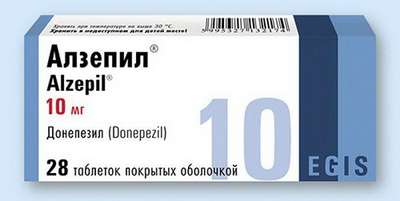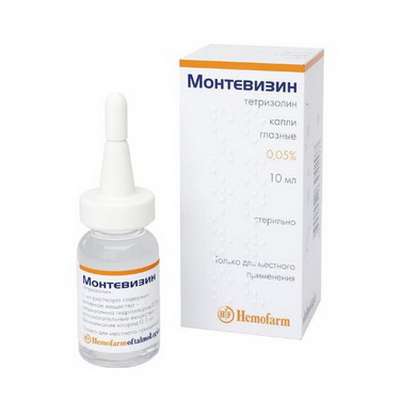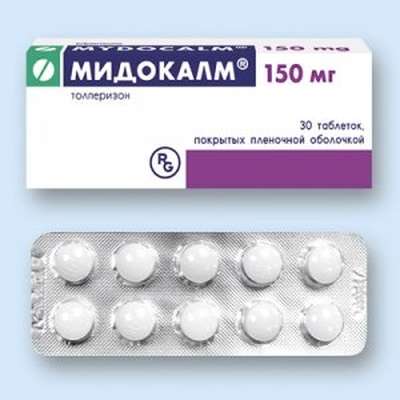Instruction for use: Immunorm
I want this, give me price
Dosage form: Solution for oral administration; tablets
Active substance: Succus herbae Echinaceae purpurae
ATX
L03AX Other immunostimulants
Pharmacological group:
Other immunomodulators
The nosological classification (ICD-10)
J06 Acute upper respiratory tract infections of multiple and unspecified locations: Frequent colds of viral diseases; Infections of ENT organs; Acute respiratory illness of influenza nature; Pain for colds; Acute catarrhal disease; Cold; Colds; Colds; Respiratory infection; Seasonal catarrhal disease; Seasonal colds; Pain in infectious and inflammatory diseases of the upper respiratory tract; Bacterial infections of the upper respiratory tract; Bacterial infections of the respiratory system; Viral respiratory disease; Viral respiratory tract infections; Inflammatory disease of the upper respiratory tract; Inflammatory diseases of the upper respiratory tract; Inflammatory diseases of the upper respiratory tract with difficult to separate sputum; Inflammatory respiratory disease; Secondary infections for colds; Difficult sputum separation in acute and chronic respiratory diseases; Upper respiratory tract infections; Infections of the upper respiratory tract; Respiratory tract infections; Respiratory and lung infections; Infectious-inflammatory diseases of the upper respiratory tract; Infectious-inflammatory diseases of the upper respiratory tract and ENT organs; Infectious-inflammatory diseases of the upper respiratory tract in adults and children; Infectious-inflammatory diseases of the upper respiratory tract; Infectious inflammation of the respiratory tract; Respiratory tract infection; Qatar upper respiratory tract; Catarrh of the upper respiratory tract; Catarrh of the upper respiratory tract; Catarrhal phenomena from the upper respiratory tract; Cough in diseases of the upper respiratory tract; Cough for colds; ARVI; ARI; ARI with phenomena of rhinitis; Acute respiratory infection; Acute infectious-inflammatory disease of the upper respiratory tract; Acute respiratory disease; Persecution in the throat or nose; Respiratory and viral infections; Respiratory diseases; Respiratory infections; Recurrent respiratory tract infections; Secondary infections with influenza; Influenza states; Feverish conditions for influenza
J11 Influenza, virus not identified: Influenza; Influenza in the early stages of the disease; Influenza in children; cold in the chest; Begins flu-like condition; Acute disease parainfluenza; parainfluenza; parainfluenza state; influenza epidemics; The pains of the influenza
J18 Pneumonia without specification of pathogens: Alveolar pneumonia; Community-acquired pneumonia atypical; Community-acquired pneumonia non-pneumococcal; Pneumonia; Inflammation of the lower respiratory tract; Inflammatory lung disease; Shared pneumonia; Respiratory and lung infections; Infections of the lower respiratory tract; Cough with inflammatory diseases of the lungs and bronchi; Croupous pneumonia; Nosocomial pneumonia; Exacerbation of chronic pneumonia; Acute community-acquired pneumonia; Acute pneumonia; Focal pneumonia; Pneumonia abscessing; Pneumonia bacterial; Pneumonia croupy; Pneumonia of focal; Pneumonia with difficulty in sputum discharge; Pneumonia in AIDS patients; Pneumonia in children; Septic pneumonia; Chronic Obstructive Pneumonia; Chronic pneumonia; Lymphoid interstitial pneumonia
J22 Acute respiratory infection of lower respiratory tract, unspecified: Bacterial respiratory disease; Bacterial infections of the lower respiratory tract; Bacterial infections of the respiratory system; Viral respiratory disease; Viral respiratory tract infections; Inflammatory respiratory disease;; Difficult sputum separation in acute and chronic respiratory diseases; Respiratory tract infections; Respiratory and lung infections; Lower respiratory tract infections; Infections of the lower respiratory tract; Infectious inflammation of the respiratory tract; Infectious diseases of the respiratory tract; Infectious diseases of the lungs; Infectious diseases of the respiratory system; Respiratory tract infection; Cough for colds; Pulmonary infection; Acute respiratory tract infection; Acute respiratory viral infection; Acute inflammatory airway disease; Acute respiratory disease; Respiratory infection; Respiratory and viral infections; Respiratory syncytial viral infection in young children; Respiratory diseases; Respiratory infections
N39.0 Urinary tract infection without established localization: Fungal infections of the urinary tract; Asymptomatic bacteriuria; Bacterial infections of the urinary tract; Bacterial infections of the urinary tract; Bacterial infections of the genitourinary system; Bacteriuria; Bacteriuria asymptomatic; Bacteriuria chronic latent; Asymptomatic bacteriuria; Asymptomatic massive bacteriuria; Inflammatory urinary tract disease; Inflammatory urinary tract disease; Inflammatory diseases of the bladder and urinary tract; Inflammatory diseases of the urinary system; Inflammatory diseases of the urinary tract; Inflammatory diseases of the urogenital system; Fungal diseases of the urogenital tract; Urinary Tract Infections; Urinary Tract Infections; Infections of the urinary system; Urinary tract infections; Urinary Tract Infections; Urinary tract infections caused by enterococci or mixed flora; Urinary tract infections uncomplicated; Urinary tract infections complicated; Infections of the urogenital system; Infections urogenital; Infectious diseases of the urinary tract; Urinary Tract Infection; Urinary tract infection; Urinary system infection; Urinary tract infection; Urinary tract infection; Infection of the urogenital tract; Uncomplicated urinary tract infections; Uncomplicated urinary tract infections; Uncomplicated urinary tract infections; Uncomplicated infections of the genitourinary system; Exacerbation of chronic urinary tract infection; Retrograde kidney infection; Recurrent urinary tract infections; Recurrent urinary tract infections; Recurrent infectious diseases of the urinary tract; Mixed urethral infections; Urogenital infection; Urogenital Infectious-Inflammatory Disease; Urogenital mycoplasmosis; Urologic disease of infectious etiology; Chronic urinary tract infection; Chronic inflammatory diseases of the pelvic organs; Chronic urinary tract infections; Chronic infectious diseases of the urinary system
Composition and release form
Tablets - 1 table.
Dried pressed juice from fresh herbs of Echinacea purpurea 100 mg
Auxiliary substances: silicon colloidal dioxide; Sorbitol - 570 mg (which corresponds to 0.05 XE); Sodium cyclamate; Magnesium stearate
In contour acheikova packing 10 pcs .; In the box 2 packs.
Solution for oral administration 100 ml
Dried juice from the fresh herb of Echinacea purpurea 75.6 ml
Ethanol 90% (V / V) 24.4 ml
In bottles of dark glass of 50 ml; In the box 1 bottle, complete with a measuring cup.
Description of dosage form
Tablets - round, biconcave, beige with brown spots (interspersed).
Solution for ingestion - a transparent, brown or reddish-brown liquid with a characteristic odor.
Characteristic
Means of plant origin.
Pharmachologic effect
Mode of action - immunostimulating.
Stimulates mainly cellular immunity, increases the number of leukocytes and increases the phagocytic activity of granulocytes.
Indications of the Immunorm
Recurrent infectious diseases of the respiratory and urinary tract (prevention and treatment).
Contraindications
Hypersensitivity, progressive systemic diseases (tuberculosis, leukemia, collagenosis, multiple sclerosis), AIDS and HIV-carrier, other autoimmune diseases, age up to 12 years (oral solution).
Restrictions on the use: pregnancy, breast-feeding; Alcoholism and severe liver damage (oral solution).
Application in pregnancy and breastfeeding
Not recommended (no sufficient studies).
Side effects
In some cases - allergic reactions: rash, itching, rarely - edema of the face, shortness of breath, sweating (require discontinuation of treatment and consultation of a doctor).
Interaction
Not identified.
Dosing and Administration
Inside, regardless of food intake, adults and children over 12 years of age by 1 table. (You can suck, chew or swallow with water) 3 times a day or 2.5 ml of the solution (previously diluted in sufficient water) 3-4 times a day. Duration of treatment - no more than 8 weeks.
Precautionary measures
Long-term retention of complaints, dyspnoea, fever, purulent or bloody sputum on the background of respiratory infections calls for a doctor's consultation.
With the repeated appearance of complaints from the urinary tract, a medical examination and regular medical follow-up are necessary in the future. The presence of fever and the preservation of dysuric complaints (regardless of the presence of blood in the urine) for 5 days require a re-visit to the doctor.
Special instructions
Patients with congenital intolerance to fructose can use the pill only after consulting a doctor.
The turbidity of the solution or the appearance of flocculent sediment does not affect the effectiveness of the preparation.
Storage conditions of the drug Immunorm
Ordinary conditions.
Keep out of the reach of children.
Shelf life of the drug Immunorm
Tablets 100 mg - 2 years.
Solution for oral administration - 5 years. After opening the vial, the solution is suitable for use for 4 weeks.
Do not use after the expiry date printed on the package.

 Cart
Cart





